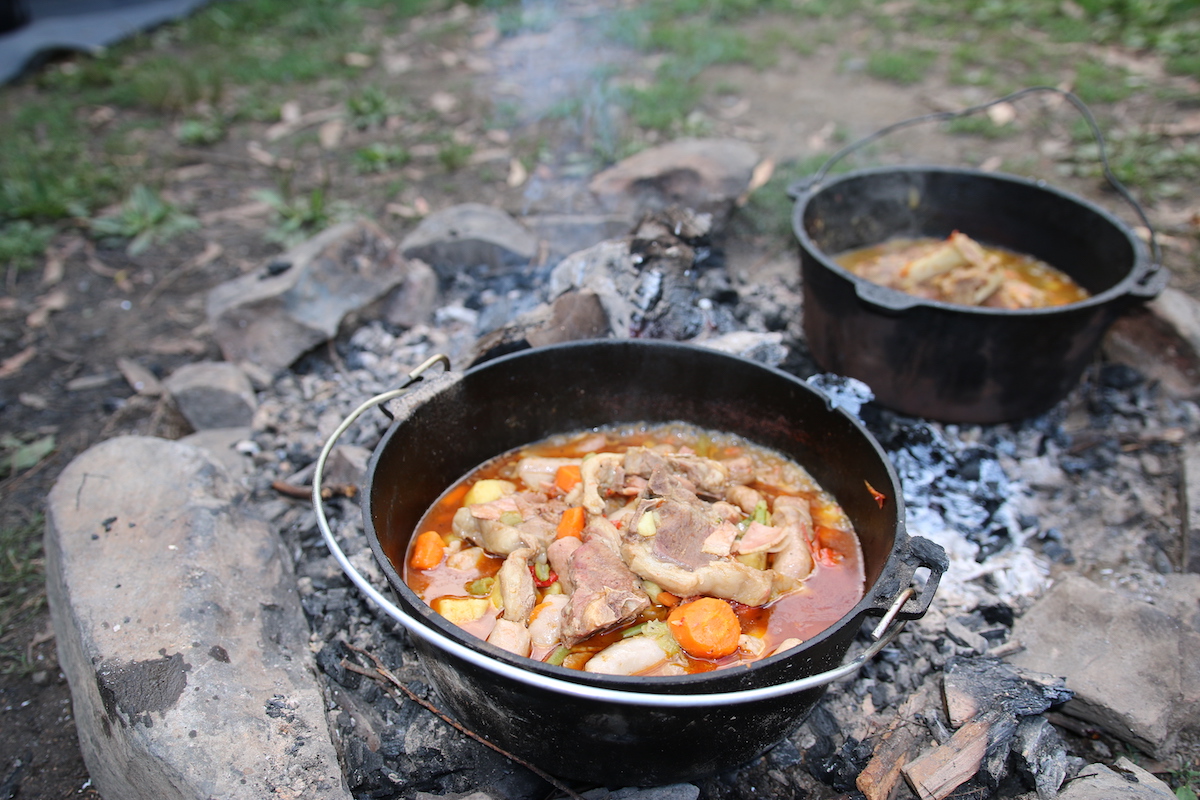Okay, so the coffee one is a slight exaggeration, but you know what I mean – there are plenty of technological solutions to common caravanning problems. And these gadgets have their place. I am in favour of anything that makes life on the road as easy and comfortable as possible.
However, I have a hypothetical question. Does all of this equipment strip some of the ‘art’ out of the lifestyle? Are we in danger of losing the skills of yesteryear by relying on technology?
During a recent trip, I reflected on the three things that I couldn’t do without. Assuming I had the caravan and that my food and water needs were taken care, stripping a trip back to basics, what would I nominate as the most important items? After much consideration, I settled on the following…

A WAY TO MAKE FIRE
We all understand the importance of fire. From cooking our food to providing an evening focal point for the family, the campfire is indispensable. If my van ran out of gas, I could always barbecue over the coals. If my torches ran out of batteries, the fire would provide some light.
So I always have a box of matches in the van and, in my vehicle’s glovebox, I even have an old flint and steel.

SMOKE AND CARBON MONOXIDE DETECTOR
On the subject of fire, a smoke detector is absolutely essential. The good news is that they are standard equipment on RVs.
However, carbon monoxide detectors are, sadly, still not as common. My own van, which is about five years old, does not have one and I absolutely intend to rectify that situation before my next trip.
Carbon monoxide (CO) is an odourless, colourless, tasteless gas that is slightly lighter than air. In sufficient concentration, it can kill within minutes. It is produced by the incomplete combustion of any fuel that contains carbon, including gas, natural gas, oil and coal and wood products.
It can build up in any enclosed or semi-enclosed space. Exposure can occur through inhalation of the gas, or by eye or skin contact when it is in its liquid form (CO becomes a liquid under high pressure).
When inhaled, it bonds with the haemoglobin in the blood, replacing the oxygen molecules and depriving the body of oxygen.
Symptoms of low-level carbon monoxide poisoning include headaches, nausea, weakness, dizziness and confusion. As CO exposure increases, more serious symptoms develop, including a lack of coordination, chest pain, vomiting and loss of consciousness. If exposed to CO long enough, coma and death can occur.
This is why a CO detecter is on my list of indispensable items and should be on yours, too.

PURIFYING WATER
We should always ensure that our vans are stocked with plenty of drinking water. But a means to purify water so that it’s safe for drinking in the case of an emergency is essential. To some, this might mean a simple pot that can boil water; for others, it might be a commercial inline water filter that sits between a pump and their water tank, or their water tank and their tap.
However, boiling water has been used as a means to ‘purify’ water is an inexact process that may not always be sufficient. A rolling boil that lasts for only one minute, for example, may not kill all harmful bacteria, leaving behind some organisms such as giardia, cryptosporidium, and even some viruses. A much longer boil, however, stands a better chance of making it safe from bacteria.
Further, boiling water will not remove non-living contaminants, such as chemicals, herbicides, pesticides and even heavy metals.
So while boiling water of uncertain origin is certainly better than not boiling it at all, it is a better bet to use a dedicated filtration system. But do your research to ensure that the filter will suit your needs. There is also a range of portable filters that may suffice for our hypothetical ‘emergency scenario’ that are claimed to remove bacteria such as giardia, dysentery and e-coli, a range of viruses and chemicals, as well as silt, sediment and heavy metals.
Many caravanners use a two-stage filter: one designed to remove particles and sediment, etc., while the other is an activated charcoal filter to remove bad tastes, odours, chemicals, bacteria, etc.
You might consider hanging such a filtration system from your van’s chassis rail by two screws when parked (removing it for travelling). You could also use an ordinary irrigation particle filter to prevent larger debris from reaching the main filter.

MEET THE AUTHOR

Max Taylor
Max Taylor has been caravanning since he was a kid and was the editor of some of Australia’s most well-known RV publications for almost 10 years.





